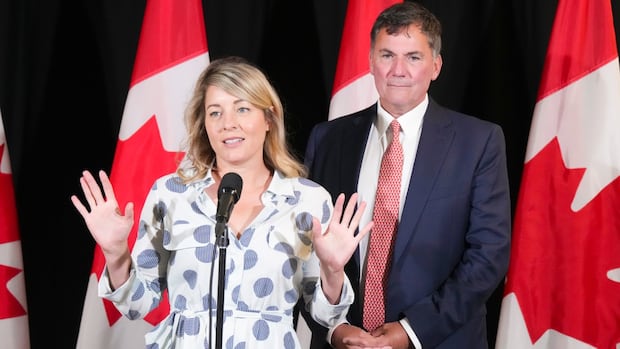There are no simple answers to the immigration and housing question
On Thursday, Chrystia Freeland was asked whether Canada has an immigration problem. In her response, she suggested Canada has a housing problem.
Canada, she argued, is the most welcoming country in the world for newcomers and enjoys an economic and competitive advantage as a result. But “if we want to be a country that welcomes new Canadians — and I strongly believe that’s the right thing for all of us,” she said, “we have to build more homes faster.”
The question for the finance minister was prompted by reporting by the Canadian Press that found senior public servants at Immigration, Refugees and Citizenship Canada were briefed in 2022 about a “misalignment between population growth and housing supply.” Such a divergence between demand and supply tends to drive up prices for housing.
But how the problem is framed — as a matter of too much immigration or too little housing, or some combination of the two — matters a lot. While it might seem like a straightforward issue of supply and demand, the question of immigration and housing defies the desire for simple answers.
As much as population growth is a factor in the cost of housing in Canada, it may be oversimplifying matters to consider it a problem of “immigration” writ large, rather than a problem with specific elements of the immigration system. It’s possible, for instance, that the federal government needs to review the exponential growth in the arrival of non-permanent residents — specifically international students and temporary foreign workers.
“When we look at the past 30 years, we can see that the inflow of new [permanent residents] has long been a significant driver of population growth. In the last year or so, inflows of [non-permanent residents] have become more pronounced and now account for a larger share of population growth,” Toni Gravelle, deputy governor of the Bank of Canada, noted in a speech last month.
Big questions about international students and workers
Immigration Minister Marc Miller has taken some steps to impose restraint on student visas. But it’s not clear that he’s done enough.
“When it comes to international students, there is some work to be done there, whether it’s on reforming the post-graduate work permits that these people get or really controlling the volume,” Miller said an interview that will air Sunday on Rosemary Barton Live.
At the same time, universities and colleges might blanch if the federal government tried to significantly restrict such a lucrative stream of enrolment — and likely would argue that they are otherwise underfunded.
In his December speech, Gravelle also raised an interesting question about the distribution of temporary work permits — specifically, whether enough are going to the sorts of workers who might help this country build more houses.
“While Canada is welcoming more newcomers than ever, only about three per cent of [non-permanent workers] work in construction,” he said. “By comparison, roughly eight per cent of the overall employed population works in construction.”
If immigration could be better harnessed to accelerate home building, supply might actually help us meet demand.
The housing shortage and the Canadian consensus
When Freeland said this week that Canada has the “social capital” to welcome immigrants, she wasn’t wrong. For more than two decades, the number of Canadians who believe there is “too much” immigration to this country have been in the minority, according to polling by Environics.
But that consensus has wobbled markedly over the past year — and that is the larger concern hanging over this debate.
When Environics asked in 2022, 69 per cent of respondents disagreed with the idea that there was too much immigration to Canada, while 27 per cent agreed. By last September, disagreement was down to 51 per cent and agreement was up to 44 per cent.

If there is any good news in that finding, it’s that the drop in enthusiasm does not seem to be based in social or cultural concerns about newcomers; among those who agreed there was too much immigration, the share who said immigration represented a threat to Canadian or Quebec culture actually dropped from 24 per cent to eight per cent. Seventy-four per cent of all respondents also still agreed that the “economic impact of immigration is positive.”
Instead, the new doubts seem almost entirely attributable to concerns about housing; those saying immigrants drive up housing prices or lead to a shortage of housing for other Canadians jumped from 15 per cent to 38 per cent.
Solving the housing problem is therefore doubly important. Canadians need to be able to live comfortably — and social cohesion could be threatened if they can’t.
The danger of scapegoating immigration
While attention turned this week to immigration and its potentially negative impact on the cost and availability of housing, a report by Desjardins released on Wednesday warned that a “sharp drop‑off” in non-permanent residents “could deepen the recession expected in early 2024.”
That underlines the difficult balancing act and trade-offs at play. The Liberals can be sure they won’t be applauded if their efforts to make housing more affordable end up being blamed for causing an economic downturn.
If one accepts the premise that higher immigration is a net-positive — economically and socially — and even a public policy imperative for Canada, then significantly curtailing immigration for the sake of the housing market risks swapping one problem for another.
But there also remains the risk that immigration will be unfairly scapegoated for a problem that would be better pinned on federal, provincial and municipal governments that have failed to ensure enough houses get built in Canada.
As unfortunate as it might be that housing concerns are creating doubts about immigration, it would be worse still if blaming immigration became a handy excuse for governments to avoid necessary investments in social housing or changes to local zoning. There would still be a case for taking such action even if this country suddenly reduced immigration to zero.
In an ideal scenario, Canada would have both markedly higher immigration and more plentiful housing. And it would be a mistake to assume the current problem can simply be blamed on one or the other.




